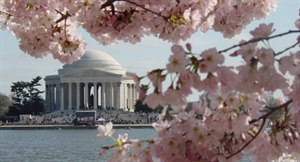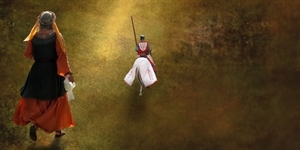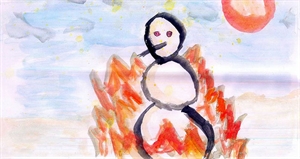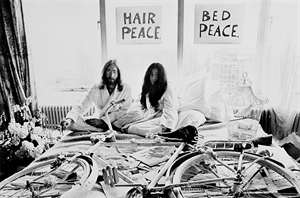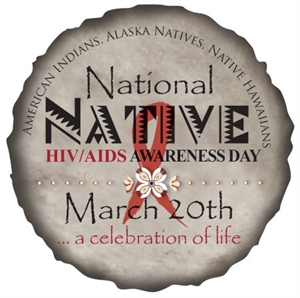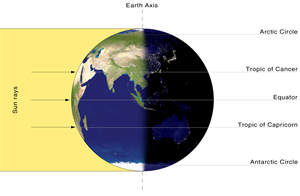Now Ruz Day 2025 is on Thursday, March 20, 2025: On what day do Baha'is celebrate their religious festival?
Thursday, March 20, 2025 is Now Ruz Day 2025. Nowruz Day Search for Nowruz Day Look Up Quick Results Now!

Naw Ruz (New Year) March 21
Ridvan (declaration of Baha'u'llah) April 21 to May 2
Declaration of the Bab, May 23
Ascension of Baha'u'llah May 29
Martyrdom of the Bab July 9
Birth of the Bab October 20
Birth of Baha'u'llah November 12
Day of the Covenant November 26
Ascension of Abdu'l-Baha November 28
Ayyam-i-Ha (Intercalary Days, time of giving gifts, parties and preparing for the Fast) February 26 to March 1
The Calendar varies on some holy days in Iran. To be honest, I find that rather confusing.
Fasting March 2 to 20

every one know what is norooz?
No Ruz, new day or New Year as the Iranians call it, is a celebration of spring Equinox. It has been celebrated by all the major cultures of ancient Mesopotamia. Sumerians, 3000BC, Babylonians 2000 BC, the ancient kingdom of Elam in Southern Persia 2000BC, Akaddians all have been celebrating it in one form or another. What we have today as No Ruz with its’ uniquely Iranian characteristics has been celebrated for at least 3000 years and is deeply rooted in the traditions of Zoroastrian belief system.
This was the religion of Ancient Persia before the advent of Islam 1400 years ago. It is known as the mother religion in the area. The familiar concepts of Hell, Heaven, Resurrection, coming of the Messiah, individual and last judgment were for the first time incorporated into this belief system. They still exist in Judo-Christian and Islamic traditions. In order to understand No Ruz we have to know about Zoroastrians’ cosmology.
These people believed in two primal forces. In their ancient text, Bundahishn foundation of creation, we read that The Lord of Wisdom residing in the eternal light was not God. He created all that was good and became God. The Hostile Spirit, Angra Mainyu (Ahriman), residing in the eternal darkness created all that was bad and became the Hostile Spirit (The word anger in English comes from the same origin).
Everything that produced life, protected and enriched it was regarded as good. This included all forces of nature beneficial to humans. Earth, waters, sky, animals, plants were all good. Justice, honesty, peace, health, beauty, joy and happiness were regarded as belonging to the good forces. All that threatened life and created disorder belonged to the hostile spirits.
The two worlds created did not have a material form but the essence of everything was present. The two existed side by side for three thousand years, but completely separate from each other. At the end of the third millennium the Hostile Spirit saw light, wanted it and attacked the good world. This was the beginning of all troubles we face now.
The Lord of Wisdom in order to protect his world created the material world "Gaeity",Geety in modern Persian. This material world was created at seven different stages. The first creation was the sky, a big chunk of stone high above. The second creation was the first ocean, at the bottom. Earth a big flat dish sitting on the ocean was the third. The next three creations were the prototypes of all life forms. The first plant, the first animal a bull and the first human Gayo-maretan (Kiomarth), both male and female. The seventh creation was fire and sun together.
The struggle continues for 12000 years. There are four periods, each 3000 years. At the last phase several saviors come and the last one Saoshyant will save the world. When he comes there is resurrection, walking over the Chinvat Bridge (Sarat Bridge in Quran) and last judgement. We recognize this figure as Time Lord (Imam Zaman) in Iranian version of Shiite Islam.
In order to protect his creations the Lord of Wisdom also created six holly immortals, Amesha Spenta one for each creation. Khashtra (Sharivar), the protector of sky, Asha-Vahishta (Ordibehesht) protected fire. Vahu Manah (Bahman) for all animals, Haurvatat (Khordad) protected all waters, Spenta Armaiti (Esphand) a female deity protector of mother earth and Ameratat (Amurdad) supported all plant life. Ahura Mazda himself became the protector of all humans and the holly fire.
There was one problem with this material world, it did not have a life cycle. The sun did not move. There were no days or nights and no seasons. The three prototypes of life were sacrificed. From the plant came the seeds of all plants. The bull produced all animals and from the human came the first male and female. The rest of the humanity was created from their union. The cycle of life started. Sun moved, there was day, night and the seasons. This was called the first No Ruz.
The Lord of Wisdom also created guardian angles (forouhars) for all living beings. Every human had one as long as they stayed with the good forces. As we see in the myth of Azydahak in Avesta, the Zoroastrians’ holly book. We know this figure as Zahak in modern Persian. A prince, he chooses the Hostile Spirit as his protector. He was made a king, ruled for 999 years and became immortal.
Zoroaster (Zardosht) the architect of this cosmology introduced many feasts, festivals and rituals to pay homage to the seven creations and the holly immortals. Seven were amongst the most important. They are known as Gahambars, feasts of obligation. The last and the most elaborate was No Ruz, celebrating the Lord of Wisdom and the holly fire at the time of spring equinox.
The oldest archaeological record for No Ruz celebration comes from the Achaemenian (Hakhamaneshi) period over 2500 years ago. They created the first major empire in the region and built Persepolis complex (Takhte Jamshid) in central Iran. This magnificent palace/temple complex was destroyed by Alexander the Great in 334 BC.
Achaemenians had four major residences one for each season. Persepolis was their spring residence and the site for celebrating the New Year. Stone carvings show the king seated on his throne receiving his subjects, governors and ambassadors from various nations under his control. They are presenting him with gifts and paying homage to him. We do not know too much about the details of the rituals. We do know that mornings were spent praying and performing other religious rituals. Later on during the day the guests would be entertained with feasts and celebrations.
We also know that the ritual of sacred marriage took place at this palace. An ancient and common ritual in Mesopotamia, the king would spend the first night of the New Year with a young woman. Any offspring produced from this union would be sent back to the temples and they would normally end up as high-ranking religious officials. There is no evidence that this was practiced later on and was part of the New Year rituals.
What we have today as No Ruz goes back to the Sassanid period. They were the last great Persian Empire before the advent of Islam 1400 years ago. Their celebrations would start five days prior to the New Year. They believed the guardian angles (Fourohars) would come down to earth within these five days to visit their human counter parts. A major spring-cleaning was carried out to welcome them with feasts and celebrations. Bon fires would be set on rooftops at night to indicate to the guardian angles that humans were ready to receive them. This was called Suri Festival.
Modern Iranians still carry out the spring-cleaning and celebrate Wednesday Suri. Bon fires are made and all people will jump over the fire on the last Tuesday of the year. This is a purification rite and Iranians believe by going over the fire they will get rid of all their illnesses and misfortunes. Wednesday Suri did not exist before Islam and very likely is a combination of more than one ritual to make it last.
The ancient Zoroastrians would also celebrate the first five days of No Ruz, but it was the sixth day that was the most important of all. This day was called the Great No Ruz (No Ruze bozorg) and is assumed to be the birthday of Zoroaster himself. Zoroastrians today still celebrate this day, but it has lost its significance for the rest of the Iranians. In Sassanid period the New Year would be celebrated for 21 days and on the 19th day there would be another major festival.
Modern Iranians celebrate New Year for 13 days only. The first few days are spent visiting older members of the family other relatives and friends. Gifts are exchanged; sweets and feasts will be consumed. At the last day, the 13th of the first month, all people will leave their homes to go to the parks or rural areas to spend a day in nature. Again this was not celebrated in this manner before and might be several rituals in one. A major part of the New Year rituals is setting a special table with seven specific items present, Haft Sin (Haft chin, seven crops before Islam). In the ancient times each of the items corresponded to one of the seven creations and the seven holly immortals protecting them.
Today they are changed and modified but some have kept their symbolism. All the seven items start with the letter S; this was not the order in ancient times. Wheat or barley representing new growth is still present. Fish the most easily obtainable animal and water are present. Lit candles are a symbol of fire. Mirrors are used today, origin unknown. These were expensive items in ancient times and were made from polished metal. It is unlikely that all households would have one. Zoroastrians today place the lit candle in front of the mirror. Wine was always present. Today it is replaced by vinegar since alcohol is banned in Islam.
Egg a universal symbol of fertility corresponding to the mother earth is still present. Garlic is used to warn off bad omen. This is a modern introduction. There is no evidence that it was used in that context before. However the ancient Iranians would grow seven different herbs for the New Year and garlic might have been one of those. Samano a thick brownish paste is present today. It is a nutritious meal and could have been part of the feasts. It is also possible that it has replaced Haoma.
Haoma is a scared herbal mix known for its healing properties. It was a major cult on its own with many rituals and ceremonies. The cult is still performed by the Zoroastrians today, but is abandoned by the rest of the Iranians. Coins symbolizing wealth and prosperity, fruits and special meals are present as well.
Why this festival has survived? There have been major attempts by the Muslim rulers over the centuries to minimize it, ban it or get rid of it once for all. The reasons for their failure should be sought in the spirit of this festival. Contrary to the Islamic traditions where death and martyrdom mark all the major rituals, No Ruz is a celebration of life.
Forces of nature completely beyond them dominated people in ancient times. They formed a union with these forces to protect themselves. Through this union they created a balance and maintained the cosmic order Asha. Without it there would be chaos, the world of the Hostile Spirit (Ahriman). The Zoroastrians were and are required to have the same mind, the same voice and act the same way as their god the Lord of Wisdom.
They are expected to only think of good things, speak the good words and act the good deeds. Our celebrated poet Ferdousi over a thousand years ago virtually single handedly translated Avestan mythology into modern Persian. A Zoroastrian who was persecuted all his life because of his fate; he starts his book in the name of the Lord of Life and Wisdom (beh nameh khodavand jaan o kherad). The lord of life and wisdom was Ahura Mazda’s title in the Avestan texts of the Sassanid period. Lord or not, life and wisdom are what that makes us humans. We are the only beings who know we have a life and what we do with our lives depend on the wisdom. At the end of the millennium with the mess this planet is in we need that wisdom more than ever. Creating a balance with nature and maintaining order are very relevant.
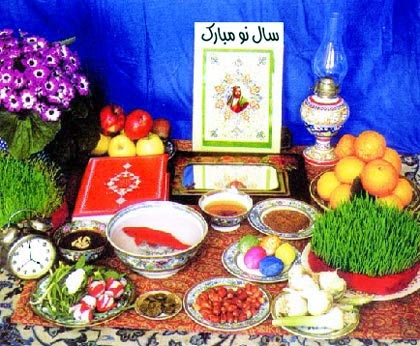
Naw-Ruz Question?????
Although it is not clear whether proto-Indo-Iranians celebrated a feast as the first day of the calendar, there are indications that both Iranians and Indians assumed the first day of autumn as the beginning of new year season. There are reasons that Iranians may have observed the beginning both autumn and spring.[26]
Boyce and Grenet explain the traditions for seasonal festivals and comment:"It is possible that the splendor of the Babylonian festivities at this season led the Persians to develop their own spring festival into an established new year feast, with the name Navasarda 'New Year' (a name which, though first attested through Middle Persian derivatives, is attributed to the Achaemenian period). Since the communal observations of the ancient Iranians appear in general to have been a seasonal ones, it is probable, however, that they traditionally held festivals in both autumn and spring, to mark the major turning points of the natural year".[26]

